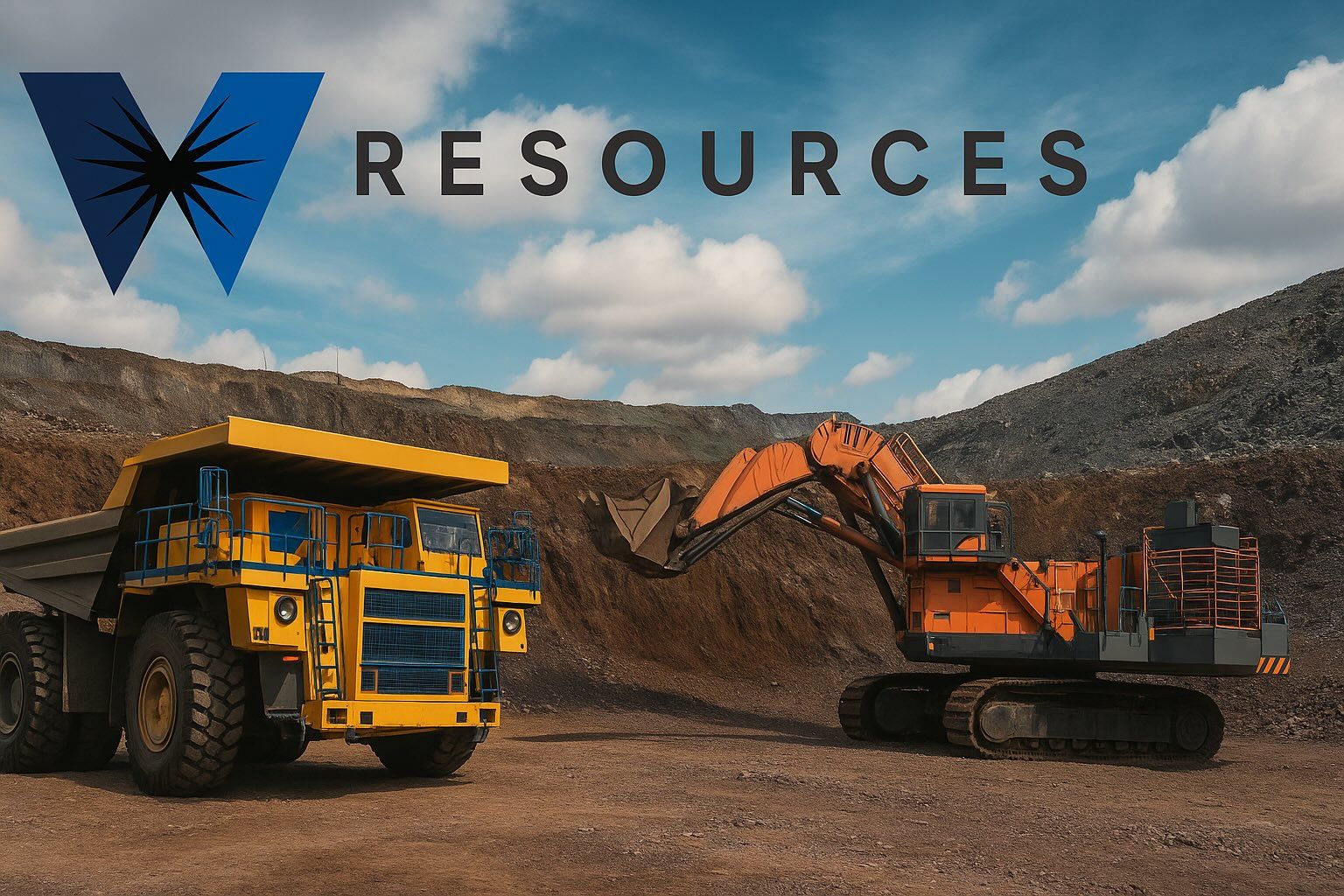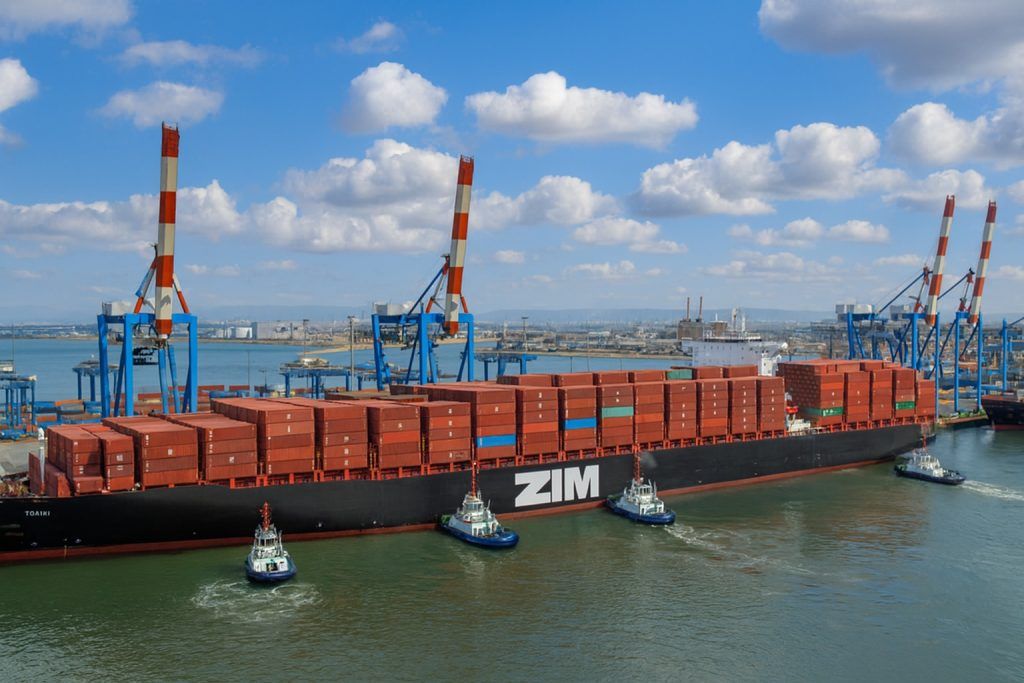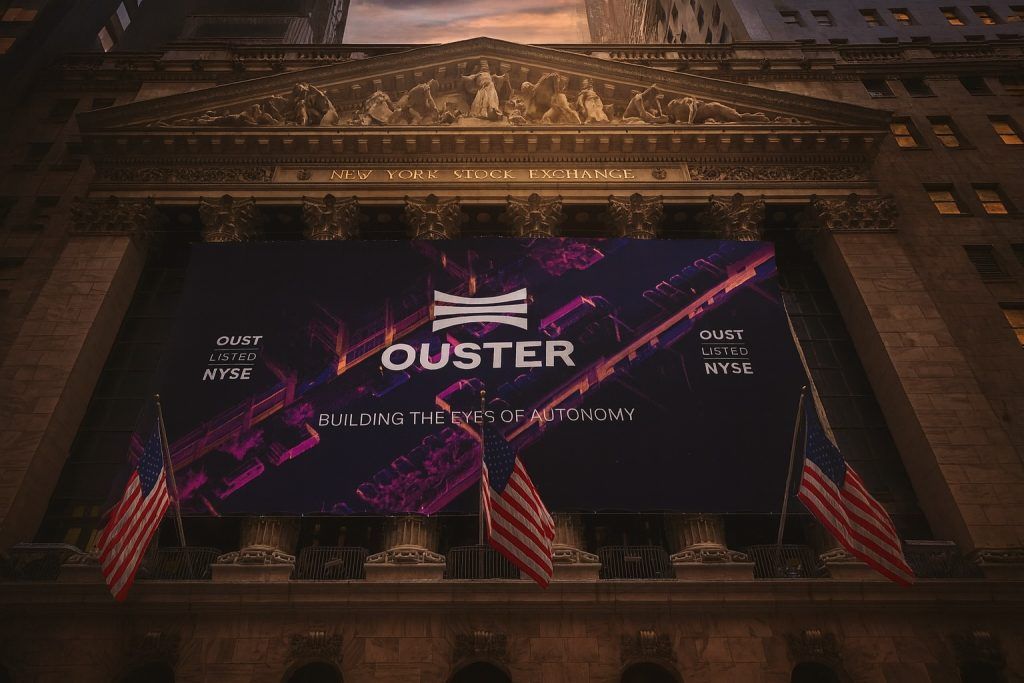- Surging Stock: Westwater Resources (NASDAQ: WWR) has seen its share price explode in mid-October. The stock closed around $3.48 on Oct. 14, up 35–36% just that day [1]. This extends an extraordinary rally – shares jumped ~29% the day prior and have more than doubled in the past week [2]. Year-to-date, WWR is now up nearly 400% [3], vastly outperforming the broader market.
- Battery Metals Boom: The rally comes amid a frenzy for electric-vehicle (EV) battery material stocks. Investors are piling into U.S. critical minerals plays. Peers like Novonix (NASD: NVX) and Lithium Americas (NYSE: LAC) have similarly surged on positive news, from breakthrough graphite production to major government investments [4] [5]. WWR – a graphite developer – appears to be riding this wave of enthusiasm for domestic EV supply chain companies.
- Project Milestones: Westwater is developing the Kellyton Graphite Processing Plant in Alabama, poised to become the first large-scale graphite anode material facility in the U.S. The company reports steady progress: 85% of Phase I equipment is on site, and commissioning of key milling systems is underway [6] [7]. Westwater has even produced battery-grade graphite test batches (1+ metric ton) for potential customers using a pilot “qualification line” [8] – a significant step toward commercialization.
- Financing & Support: To fund completion of the $245 million plant, Westwater is advancing a $150 million debt financing syndicate and recently received a U.S. Export-Import Bank Letter of Interest under the “Make More in America” initiative [9] [10]. Management says due diligence with lenders and EXIM is ongoing, and they’re “confident in completing Phase I funding” with support from both private and public partners [11] [12]. The federal push to secure critical minerals has been a tailwind – Westwater applauded new U.S. tariffs on Chinese graphite imports and is positioned as a homegrown supplier.
- Analyst View & Risks: Despite the euphoria, analysts urge some caution. Wall Street’s lone price target for WWR is $2.00 – below the current price [13] – reflecting the company’s early stage. Westwater is pre-revenue (net loss of ~$12M last year [14]) and will need to execute flawlessly to justify its ~$300M market cap [15]. HC Wainwright analysts maintain a Buy rating and note Westwater “is positioned to benefit” as U.S. policy promotes domestic graphite over Chinese sources [16]. But they likewise trimmed their target from $2.50 amid execution risks. With the stock’s RSI near 97 (overbought) [17] and a 500%+ 1-year gain [18], volatility is expected – making Westwater a high-reward and high-risk bet in the critical minerals arena.
Westwater’s Stock Soars to New Heights
Westwater Resources’ share price has gone parabolic, hitting levels not seen in years. On Tuesday (Oct. 14), WWR jumped ~36% to $3.48 by the closing bell [19]. That single-day leap, on the heels of a 29% gain Monday, marks an approximately 75% two-day surge. Over the last seven trading sessions, the stock has more than doubled (up ~138%) [20]. Such explosive momentum has ballooned Westwater’s market capitalization to roughly $300 million [21] – a dramatic rise from about $70–80M at the start of 2025. Trading volumes have been extremely heavy as well, suggesting a mix of momentum buyers and a possible short squeeze. About 8–10% of WWR’s float was sold short recently [22], and some of those bearish bets may be scrambling to cover as the stock runs up.
Nothing materially new was announced by the company this week, but sentiment on Westwater and its sector has flipped emphatically bullish. The broader backdrop is a “battery metals boom” sweeping small-cap markets. Investors have been bidding up companies tied to lithium, graphite, and other EV-related materials. Westwater – as a near-term U.S. source of battery-grade graphite – finds itself at the sweet spot of this trend. Its stock is now up over 390% in 2025 [23] (and nearly 560% higher than a year ago [24]), vastly outperforming benchmarks. By comparison, the S&P 500 is up only ~14.5% year-to-date [25]. Westwater’s incredible run has even outpaced many peers, turning it into one of the hottest small-cap stocks on the Nasdaq this month.
Battery Materials Frenzy Lifts All Boats
To understand Westwater’s surge, it helps to zoom out to the battery materials rally underway. In early October, fellow graphite/anode company Novonix (NASDAQ: NVX) saw its U.S.-listed shares skyrocket 35.8% in one day after news of a major production milestone [26]. The Halifax- and Chattanooga-based Novonix delivered its first industrial-scale synthetic graphite sample for EV batteries, sparking a rush of speculative buying. Its stock climbed from around $1.25 at the start of the month to ~$3.00 by Oct. 10 [27]. Analysts noted that Novonix’s pivot to U.S. graphite production earned positive press – but also cautioned “the company’s path remains challenging” due to lack of profits and significant scale-up risk [28]. That tempered outlook hasn’t stopped traders from piling in, however, and likely some of that enthusiasm spilled into Westwater (which targets natural graphite production for batteries).
Lithium stocks have been on a tear as well. Lithium Americas Corp. – developing a major Nevada lithium project – surged over 20% in early October after the U.S. Department of Energy took an unprecedented equity stake in the company [29]. And in the rare earths space, Critical Metals Corp. (CRML) shares leapt as much as 75% in a week on rumors the U.S. government might acquire a stake to secure a strategic mine in Greenland [30]. “This level of government interest – alongside recent investments in peers like MP Materials and Lithium Americas – is a bullish tailwind” for companies like CRML [31], according to an analysis by TechStock². The same can be said for Westwater: the strong policy push for homegrown EV materials is creating a rising tide for domestic producers. Westwater’s product, graphite anode material, is a designated critical mineral for EV batteries, and global supply is currently dominated by China. Investors appear to be betting that U.S. projects like Westwater’s will benefit from protectionist measures and government support aiming to localize battery supply chains.
Graphite Project Progress and Catalysts
Westwater’s Kellyton Graphite Plant under construction – internal equipment installation (July 2025). The Alabama facility will refine natural graphite into battery-grade anode material for electric vehicles and electronics. [32] [33]
Westwater’s fundamentals have also been improving, providing a foundation for the bullish sentiment. The company’s flagship Kellyton Graphite Plant in Coosa County, Alabama – a first-of-its-kind U.S. graphite processing facility – is well into construction and approaching the finish line for Phase I. “We remain confident in the strength of our project… Westwater is well-positioned to play a leading role in strengthening the domestic battery supply chain,” Executive Chairman Terence Cryan said in August [34]. In the second quarter of 2025, Westwater reported that approximately $124 million of the $245 million Phase I budget has been incurred, with 85% of the required equipment delivered to site [35] [36]. Key plant systems – all micronization and spheroidization mills used to refine graphite – have been installed or are in final installation, and the company successfully transitioned the facility to grid power [37].
Notably, Westwater has been operating a “qualification line” at the plant to produce test batches of coated spherical purified graphite (CSPG) – the end-product used in lithium-ion battery anodes. In Q2, the company produced over 1 metric ton of CSPG sample material for a battery manufacturer’s cell trials [38]. CEO Frank Bakker said this pilot line is giving Westwater’s team valuable hands-on experience and will “allow us to hit the ground running when we reach full-scale production.” [39] The qualification line can provide bulk samples (1–10 ton lots) to potential customers even before the full plant is completed [40], helping secure offtake agreements. In fact, Westwater earlier indicated it has 100% of its Phase I output under tentative contract via offtake MOUs [41] – signaling strong demand if it delivers a quality product.
On the financial front, Westwater has been actively shoring up capital to finish the plant. The company aims to finalize a $150 million project financing this year to cover remaining construction costs [42] [43]. According to Westwater, a lead lender has already given preliminary approval and a syndicate of banks has been engaged [44] [45]. The process has seen some challenges (global market volatility and even protests affecting a raw material supplier slowed negotiations earlier in the year [46]), but momentum is back. In April, the U.S. Export-Import Bank (EXIM) issued a Letter of Interest for the Kellyton project under its programs to boost American manufacturing [47]. This indicates the federal export-credit agency could provide additional debt financing (contingent on a full application and due diligence) on top of the private loan syndicate. “Advancing both financing tracks provides optionality and flexibility… at the lowest cost of capital,” Westwater’s CFO Steve Cates noted, expressing confidence that Phase I funding will be secured in time [48] [49]. In the meantime, Westwater raised $10 million through convertible notes over the summer to keep construction going [50] – a dilutive but necessary move to maintain momentum. The company has around $12.5 million cash on hand as of August [51], and it maintains that the total Phase I cost remains $245M (with contingency) despite inflationary pressures [52].
All told, Westwater’s project is nearing the operational stage. Management expects Phase I of the Alabama plant to start production in 2026, with an initial output capacity of ~7,500 tons per year of battery-grade graphite. Phase II expansions are on the drawing board to further ramp capacity. If Westwater hits these milestones, it would mark a transformational shift – establishing a domestic source of a key battery ingredient (graphite) which today is almost entirely imported. This narrative of a made-in-USA graphite supply clearly has investors excited, especially as EV sales climb and geopolitics spotlight the vulnerability of relying on Chinese graphite (China currently produces ~70–80% of the world’s graphite anodes).
Analyst Outlook: Optimism with a Side of Caution
Despite the fervor, experts underscore that Westwater is still an early-stage venture with significant hurdles. The company has effectively zero revenue to date (its mining assets and plant are not yet generating sales), and it reported net losses of ~$3.9M in Q2 and ~$12.7M for full-year 2024 [53]. The stock’s towering rise means it is now pricing in a lot of future success. By traditional metrics, Westwater’s valuation looks stretched – for example, its price-to-book ratio is over 2× and it’s trading at 5–6 times the $50–60M equity on its balance sheet [54] [55]. Any stumble in execution (construction delays, cost overruns, trouble reaching commercial yields) could trigger a sharp correction in the share price.
Wall Street coverage on WWR remains sparse but telling. Investment bank H.C. Wainwright & Co. initiated coverage earlier this year and upheld a Buy rating, arguing that Westwater’s project stands to gain from U.S. policies that penalize Chinese graphite. The firm noted that the Commerce Department’s preliminary duty on imported anode material “promotes domestic graphite,” saying Westwater is poised to benefit [56]. However, in June they lowered their price target from $2.50 to $2.00 per share – a target that is now 42% below the current market price [57] [58]. This reflects a more conservative stance on near-term valuation. According to Intellectia.ai, the average 1-year price target among Wall Street analysts is $2.00 (with no higher estimates) [59]. In other words, analysts see the stock as ahead of fundamentals after the huge run-up. Indeed, one might say Westwater’s stock is priced for perfection at this point. Bulls counter that analyst targets often lag in fast-moving sectors, and note that coverage is minimal; as more analysts revisit the story, perceptions could change.
It’s also worth comparing Westwater to its peers on execution risk. Novonix, for example, now sports a ~$260M enterprise value and has a small revenue stream (~$8M trailing) from its battery testing division [60] – yet it remains deeply unprofitable and must scale a new U.S. graphite plant by 2026. Novonix’s journey illustrates the challenge: despite years of development and even backing from a major automaker (Volkswagen), it faces what Simply Wall St. calls “execution, qualification, and funding risks” on its path to commercialization [61]. Westwater is in a similar boat, but perhaps with even more to prove since it hasn’t produced revenue or locked down final financing. Both companies are essentially competing against entrenched global players (China’s BTR, Japan’s Hitachi (via acquired GrafTech assets), etc.) who supply battery graphite at scale. Building a competitive process and winning long-term supply contracts with big battery makers is no small feat for a newcomer. As one industry analyst put it, delivering initial samples is one thing; qualifying as a mass supplier is another. This backdrop explains why Westwater’s stock, while soaring, could see significant volatility. Its beta is ~1.5 (higher than the market average) [62], and daily swings of 10–30% may continue as bulls and bears tussle over the company’s prospects.
Outlook: High Hopes in the New Energy Era
From a narrative standpoint, Westwater Resources checks many boxes: a “made in America” clean energy supply story, a near-term operational milestone (plant completion), and a stock chart that has captured traders’ imaginations. The next few months will be crucial in determining if the company can justify the hype. Westwater’s management will host an earnings call on Nov. 14, 2025 to discuss third-quarter results and likely give a construction update [63]. Investors will be keen to hear if the $150M debt deal is closing and whether timelines for first production are on track. Any news on finalized customer offtake agreements or partnerships (for example, with battery manufacturers or automakers) could further validate the business case. Conversely, delays in financing or construction could spark profit-taking given the stock’s recent gravity-defying ascent.
In the bigger picture, Westwater’s rise underscores the market’s hunger for domestic EV material plays. The U.S. government’s support – from tariffs to loans – is clearly incentivizing projects like Westwater’s, and the company has smartly aligned itself with these national strategic goals. “Westwater continues to make steady progress on all fronts… as one of the most advanced natural graphite projects in the United States,” said Chairman Cryan, highlighting the company’s intent to “strengthen the domestic battery supply chain.” [64] If the Alabama plant comes online as planned and ramp-up goes smoothly, Westwater could transform from a development-stage firm into a revenue-generating supplier right as EV demand soars in the late 2020s. That upside scenario – essentially, becoming a “USA’s first battery graphite champion” – is what current investors are betting on.
For now, Westwater Resources stands as a high-flying stock with high stakes. It has delivered spectacular short-term returns to believers, and its story fits the zeitgeist of clean energy independence. The coming quarters will reveal whether this small Colorado-based company can execute on its grand ambitions and reward that faith over the long run, or whether the recent rally will be remembered as a bubble of excitement in the ever-volatile world of mining and minerals. Either way, Westwater has put U.S. graphite on the map – and Wall Street will be watching closely.
Sources: Westwater Resources press releases and filings [65] [66] [67]; TechStock² analysis [68] [69]; Intellectia/HCW analyst data [70] [71]; Finviz market data [72] [73]; and peer company reports [74] [75].
References
1. finviz.com, 2. www.trefis.com, 3. finviz.com, 4. ts2.tech, 5. ts2.tech, 6. westwaterresources.net, 7. westwaterresources.net, 8. westwaterresources.net, 9. westwaterresources.net, 10. www.juniorminingnetwork.com, 11. westwaterresources.net, 12. westwaterresources.net, 13. intellectia.ai, 14. www.trefis.com, 15. finviz.com, 16. intellectia.ai, 17. finviz.com, 18. stockanalysis.com, 19. finviz.com, 20. www.trefis.com, 21. finviz.com, 22. finviz.com, 23. finviz.com, 24. finviz.com, 25. www.trefis.com, 26. ts2.tech, 27. ts2.tech, 28. ts2.tech, 29. ts2.tech, 30. ts2.tech, 31. ts2.tech, 32. westwaterresources.net, 33. westwaterresources.net, 34. westwaterresources.net, 35. westwaterresources.net, 36. westwaterresources.net, 37. westwaterresources.net, 38. westwaterresources.net, 39. westwaterresources.net, 40. www.juniorminingnetwork.com, 41. westwaterresources.net, 42. westwaterresources.net, 43. westwaterresources.net, 44. www.juniorminingnetwork.com, 45. www.juniorminingnetwork.com, 46. www.juniorminingnetwork.com, 47. www.juniorminingnetwork.com, 48. westwaterresources.net, 49. westwaterresources.net, 50. westwaterresources.net, 51. westwaterresources.net, 52. www.juniorminingnetwork.com, 53. www.trefis.com, 54. stockanalysis.com, 55. stockanalysis.com, 56. intellectia.ai, 57. intellectia.ai, 58. intellectia.ai, 59. intellectia.ai, 60. ts2.tech, 61. ts2.tech, 62. stockanalysis.com, 63. stockanalysis.com, 64. westwaterresources.net, 65. westwaterresources.net, 66. westwaterresources.net, 67. westwaterresources.net, 68. ts2.tech, 69. intellectia.ai, 70. intellectia.ai, 71. intellectia.ai, 72. finviz.com, 73. finviz.com, 74. ts2.tech, 75. ts2.tech







